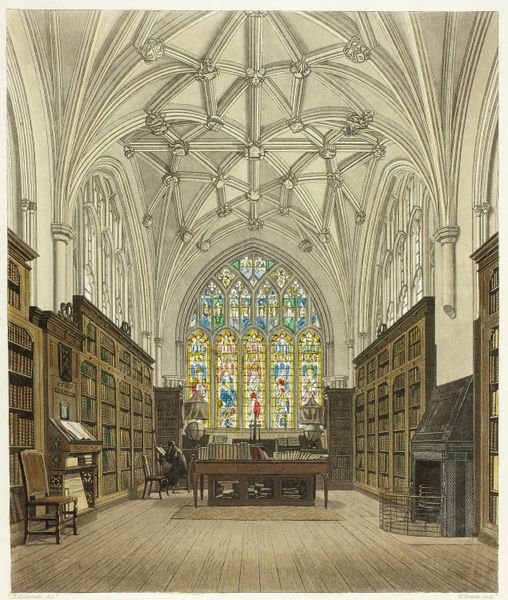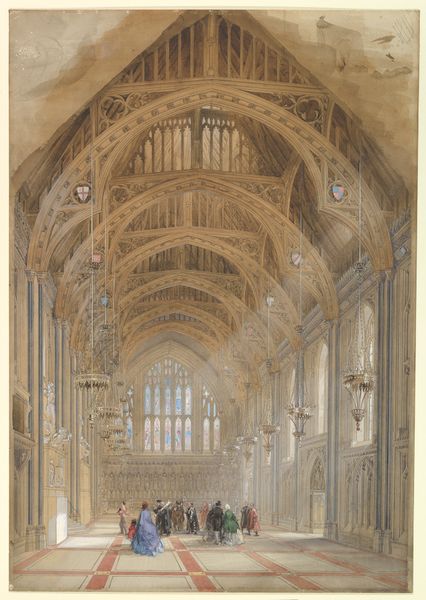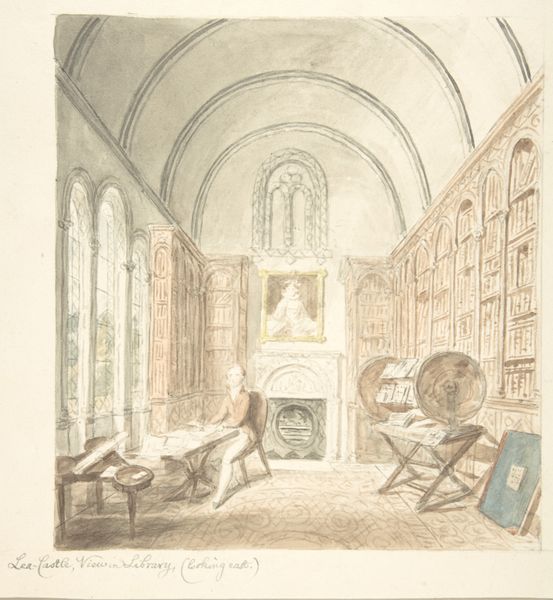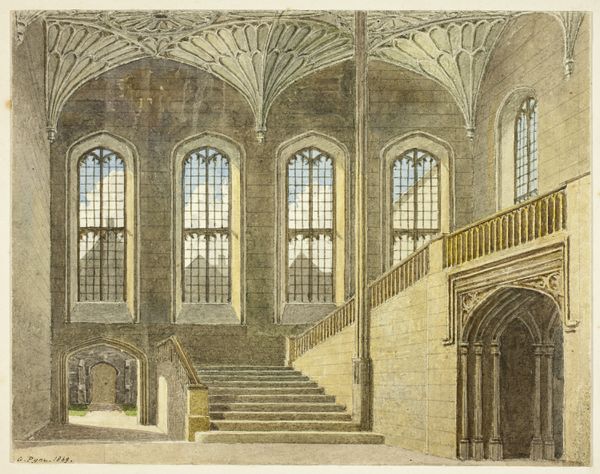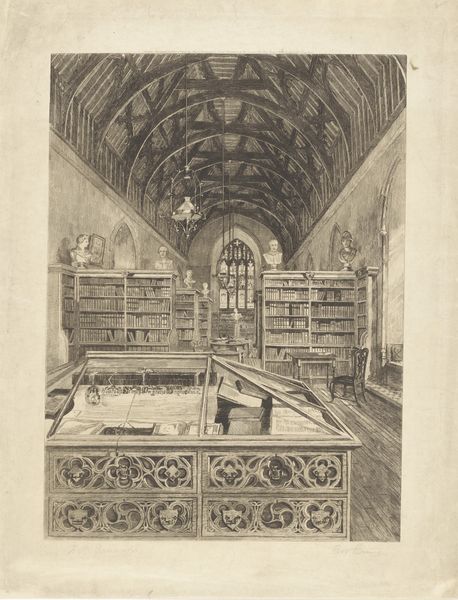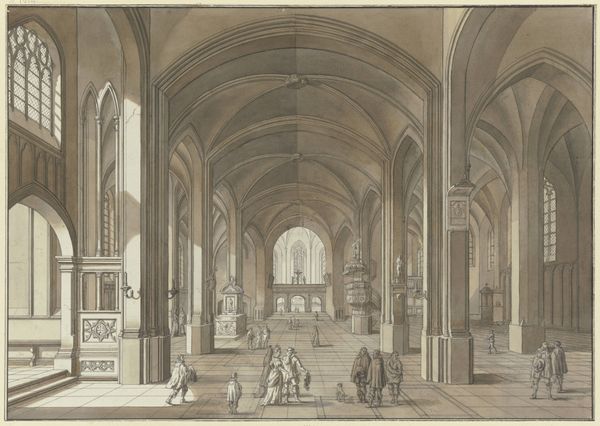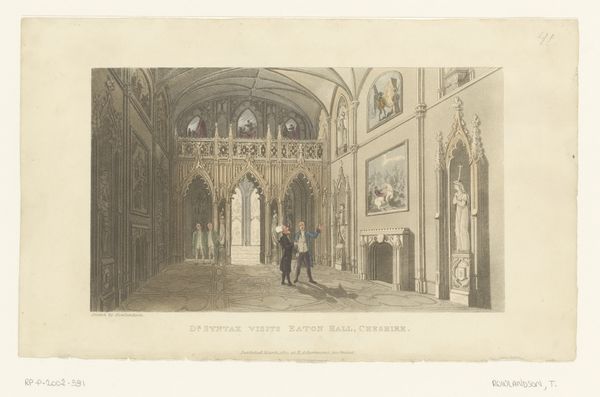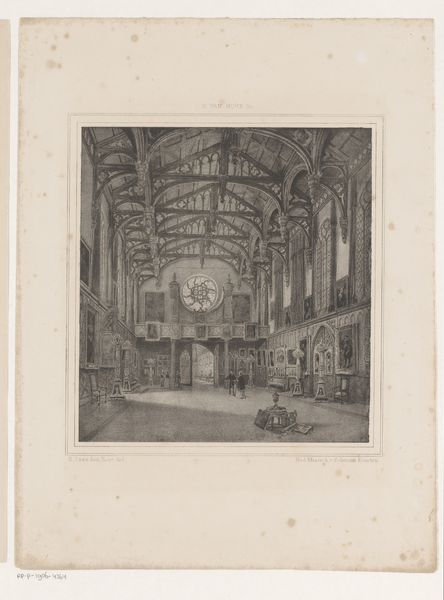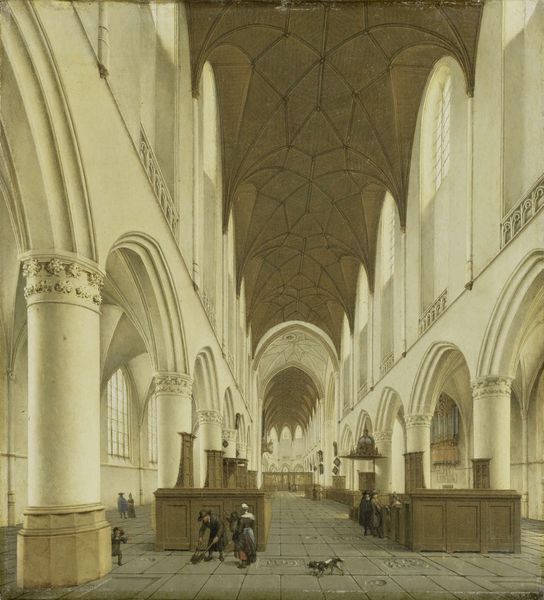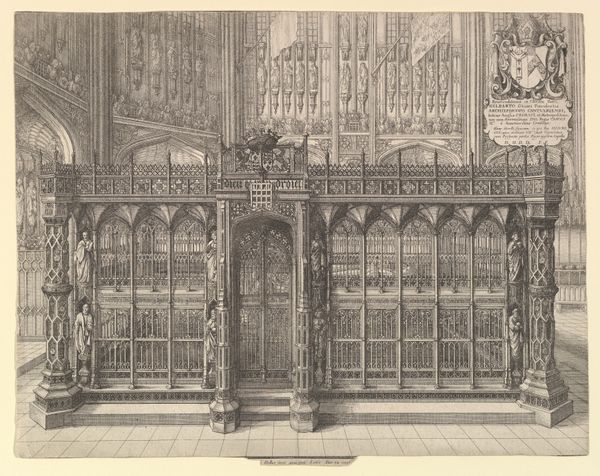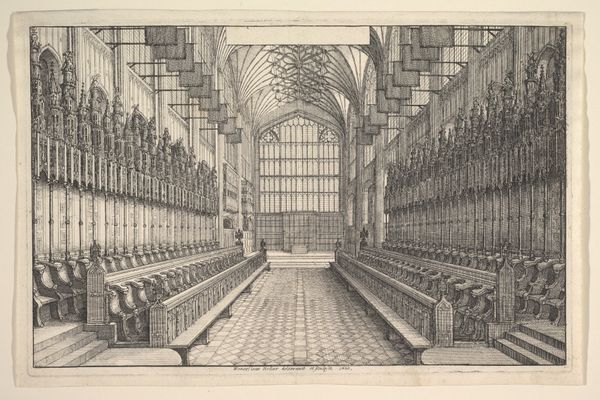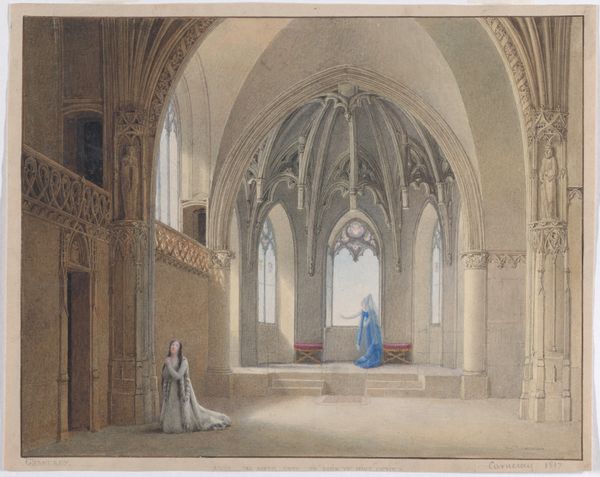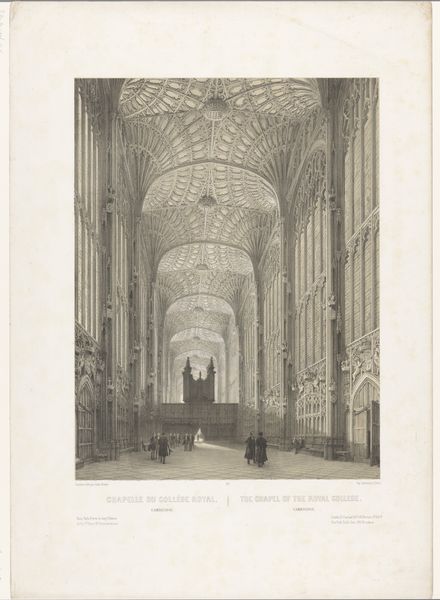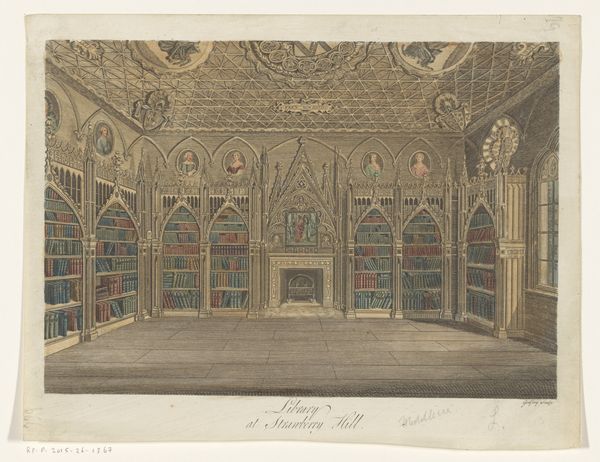
drawing, print, gouache, paper, graphite
#
drawing
# print
#
gouache
#
perspective
#
paper
#
geometric
#
architectural drawing
#
graphite
Dimensions: 260 × 218 mm
Copyright: Public Domain
Curator: This is Frederick MacKenzie's "Library of Winchester College," a drawing from around 1816 currently housed at The Art Institute of Chicago. It’s rendered in graphite, gouache, and print on paper. Editor: The immediate feeling I get is one of serenity mixed with almost overwhelming reverence. The high gothic arches, that incredible stained-glass window… the weight of tradition just settles on you, doesn’t it? Curator: Absolutely. MacKenzie captures more than just the architecture; he's also communicating the institution’s legacy and the intellectual lineage inherent in such a space. How are individuals shaped by institutional spaces such as libraries and, especially, within an institution that reproduces cultural elites? Editor: I’m struck by the detail of the woodwork. Look at the bookshelves—they aren’t just storage; they are clearly carefully crafted pieces, signifying the value placed on the knowledge contained within. And the labor involved! Each book, each shelf... Curator: The composition itself reflects societal power structures. The imposing architecture frames a lone figure reading, positioned in the center. The knowledge is both accessible and exclusive; whose voices are contained in these texts, and whose are excluded? How is access to knowledge and education dictated? Editor: And look closer. We see a desk, globes, what appears to be a fireplace—all the markers of privilege. The drawing celebrates not just knowledge but the specific class that cultivates it. Consider also how this image circulates; printmaking and distribution makes possible new audiences for this kind of propaganda. Curator: That's crucial. MacKenzie doesn't just depict a space; he actively participates in constructing an image of intellectual authority. His selection of perspectives, the manipulation of light, everything contributes to the narrative he’s building. What identities does the library exclude based on race, class, and gender? What alternative materials can be found, and what stories can be told about power? Editor: Looking again, I notice how the light falls. It pours through the stained glass but doesn't really illuminate the books themselves. The light almost washes them out. The purpose is more of spiritual enlightenment than reading comprehension. Curator: Well, engaging with this image prompts us to think about how built environments contribute to knowledge hierarchies and the narratives and histories embedded within specific architectural contexts. It invites questions around access, authority, and the social construction of both. Editor: From a materialist perspective, appreciating the labour that went into creating not only the physical space, but also its representation—it compels you to reflect on the role such institutions have played, and continue to play, in shaping social inequalities.
Comments
No comments
Be the first to comment and join the conversation on the ultimate creative platform.
